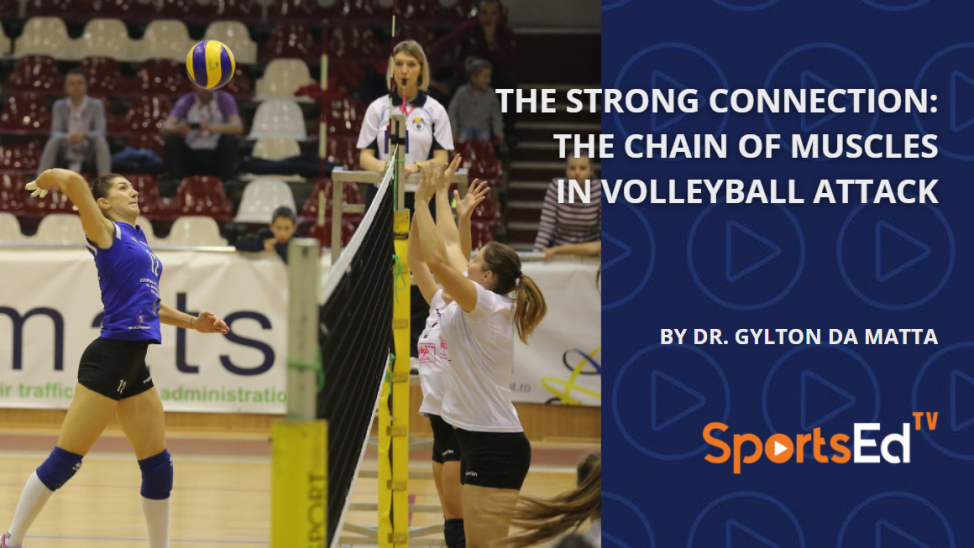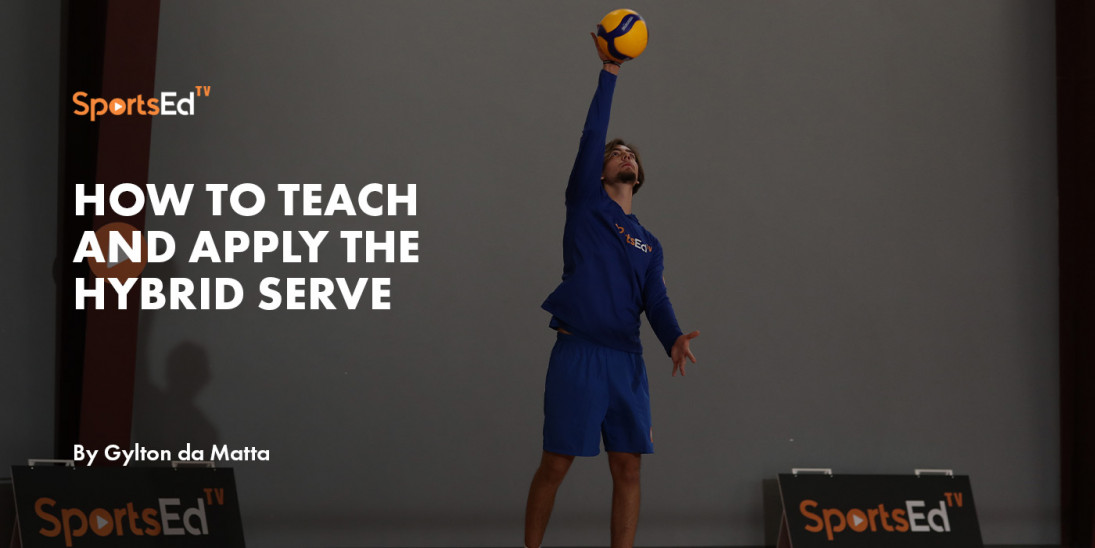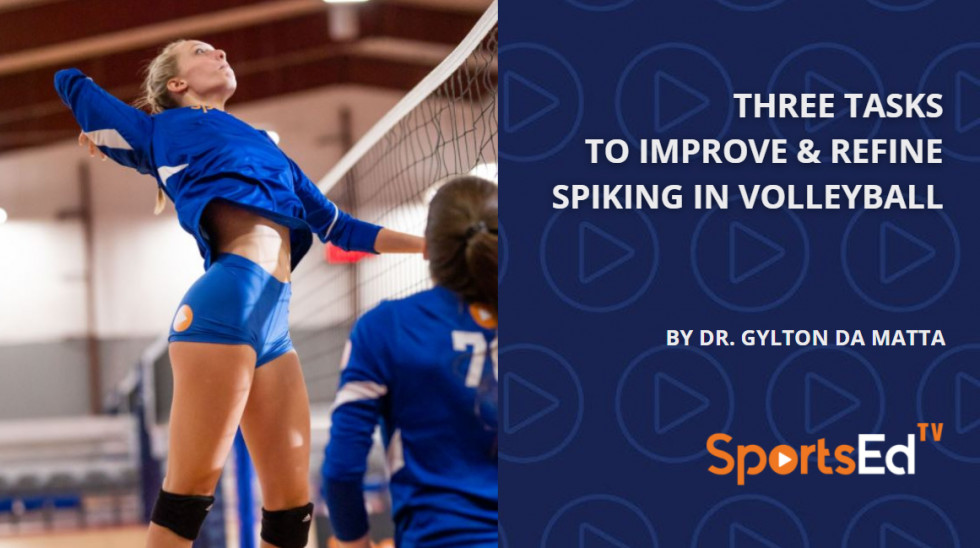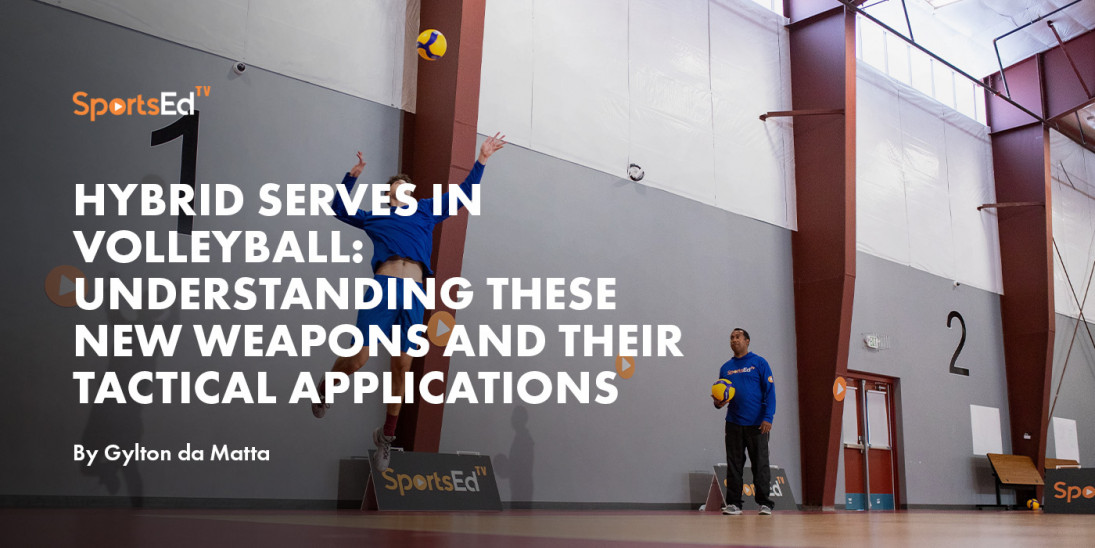Volleyball
Welcome and thanks for visiting...

What is A Volleyball Quick Attack?
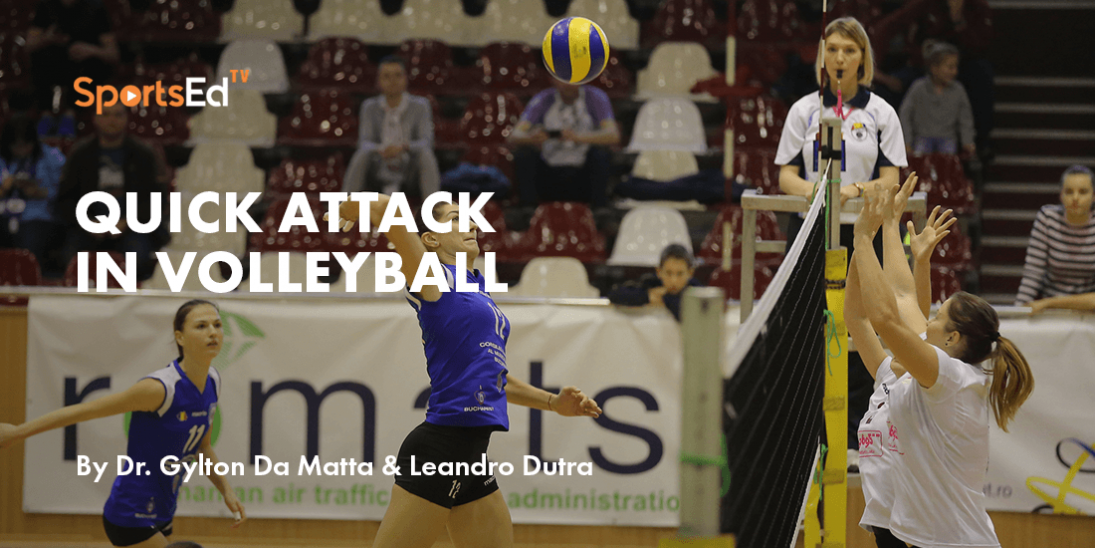
When we talk about quick attacking in volleyball, it is important to understand that today the quick attack is an attribute to the middle player, but as a fast or "speed up" offense it can be performed also by the opposite player or any other attacker, even the middle back-row player.
In the same way, if you are an elite volleyballer, you might be familiar with the Data Volleyball statistical software that has provided in detail where the ball lands on-court (Figure 1).
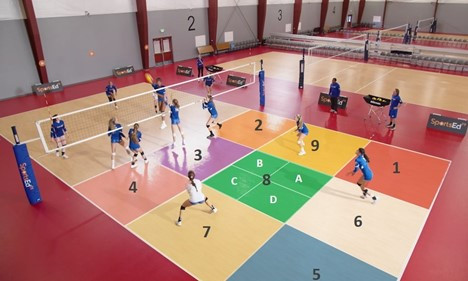
Figure 1. Denotes the zones of the volleyball court published in the chapter Tactical
Evaluation in Volleyball - A Multicultural Expertise Analysis. In: 21st Century Volleyball Expertise (book). SportsEdTV publisher; illustrates the court zones through the DataVolley® program setup.
If you are new to the sport, I would like to explain to you how the quick attack happened for the first time. Therefore, we must remember the Men’s Olympic Gold medalist team of Japan of 1972 to understand what men's and women's fast offense and multi-offense is in today's volleyball.
The quick attack is defined as a very fast attack that happens at the first tempo that the ball leaves the hands of the setter. Although the quick attack is an attribute of the middle players, the quick attack can happen right in front of the setter, behind the setter, 3 yards away from the setter, a shoot to P4 in front of the setter, a shoot back to P2 behind the setter which means it can be executed by the middle player or by other hitters playing the role to attack the first tempo ball.
Finally, a quick set to the back row player in P6, which has been named "the bick" is a contraction for "back + quick", in other words, a back row quick attack.
Japanese coaches, represented by the legendary Dr. Matsudaira, created a system based on the speed and location of the set.
There are six positions in volleyball: P1 (right back), P2 (right front), P3 (center front), P4 (left front), P5 (left back) & P6 (middle back) which represents the order of serves, but in the last 5 years, the volleyball courts have been redefined into nine zones, subdivided into four quadrants A, B, C, and D. The zones and subzones have been created to represent in detail in what part of the court the ball might land.
This categorization has happened in great part due to the reports generated by the Data Volleyball statistical software for game analyses (Da Matta et al., 2021).
For instance, a quick set at the first zone in front of the setter is called a 1.1, which means a first tempo set at zone 1. For the sake of precision, the quick attack is generally executed by the middle player, who normally plays at P3, in zone 3 as well.
Although the volleyball court has six positions, some coaches have been split the volleyball court into 9 zones to indicate the origin of attacks and the trajectories of the attacked balls (see Figure 1).
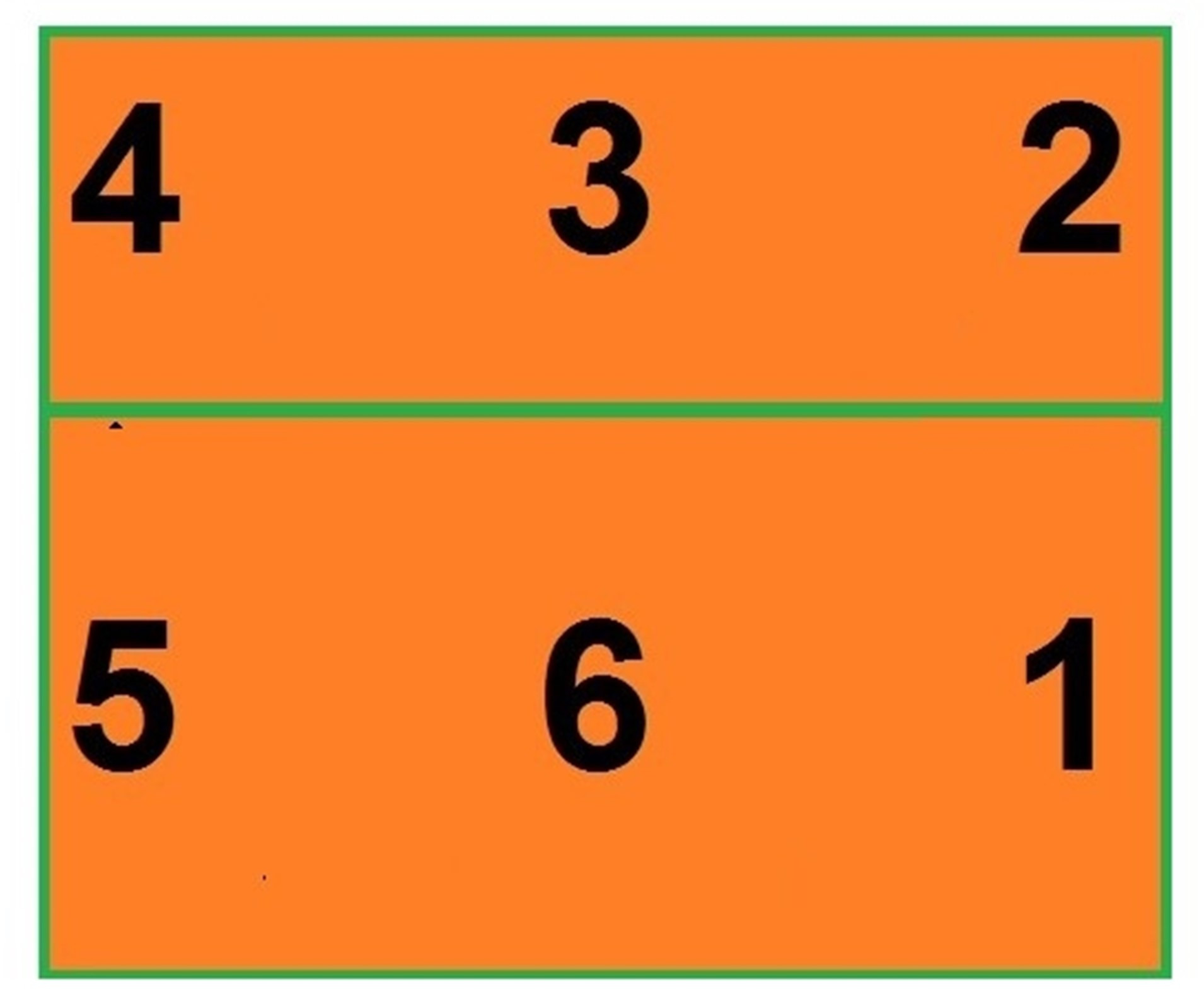
Figure 2. Six positions on the volleyball court.
Our Japanese colleagues realized that there were 9 meters at the net. Because there are more right-handed people, the setter’s starting point was in between P2 and P3 (see figure 2) They also established that the setter’s zone, should be close to the net and in between the P2 and P3, thus 6 yards would be the sets in front of the setter and 3 yards the sets behind the setter. Therefore, they created a convention that the setter’s spot would be the neutral or zero point.
Then, for teaching purposes, they established that each meter in front of the setter would be called “on the net” zones 1, 2, 3, 4, and 5 (zero to five = 6 zones) and the zones behind the setter would be categorized as zones 7, 8 and 9, a generic explanation for clarity.
I have personally heard this explanation from Dr. Matsudaira himself, when I was 12 years old the Japanese team trained for one week in my Olympico Club, in Belo Horizonte Brazil for the occasion of a coach’s clinic in 1976, also confirmed by Dr. Horst Baacke during another occasion, the first FIVB World Youth Championship held in Brazil.
In 1976, Dr. Matsudaira explained to a group of 26 coaches, that to overcome the powerful high sets of the European teams, the Japanese team developed the fast offense as a team strategy to beat all of their opponents. Dr. Matsudaira realized that if Japan would play with high balls and slow offense, his team, with low stature would have no chance to compete against the teams from Russia, Germany, Poland, and the Netherlands who were two meters tall on average (6'6") while the Japanese team was significantly shorter on average from 1,80 to 1,85 m (6'0" average).
Moreover, all European teams could reach their block at the approximated height at the antennas (3,43 m). So, the answer was to perfect passing, improve defense, and speed up the offense. The quick attack was created, primarily with the front quick attack and with the shoot in the middle 2-3 yards in front of the setter (see Figure 3a and 3b).
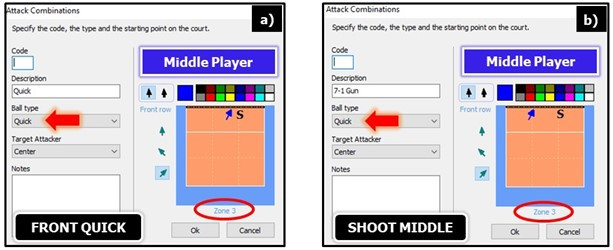
Figure (3a) illustrates the front quick ball type; (3b) illustrates shoot middle ball type. Both are performed by middle players in front of the setter. The blue arrow indicates the quick attack spot and the letter (S) depicts the setter.
In the case of the Japanese team, a quick set at the one-yard from the setter was called a "one", a second tempo set at two yards from the setter was called a 2.1 (which soon became to be a "2"); in sequence, a fast set, first tempo ball at approximately 3 yards from the setter was called the 3.1 (eventually called a "3").
Following that, the quick attack close to the 4 yards away from the setter was called a 4.1, which later became universally called a "4". Although, the Japanese team did use a shoot (very fast set) to a point close to the antenna at 5 yards from the setter, very quickly they found the need to have safety sets for the off system passes, therefore, the use of a 5.2 (a set 5 yards with a ball height going to a second tempo) became a new standard. The 52, eventually became the 5. But, they also performed the quick back close to the setter and further behind the setter. Many players started hitting the further behind quick back off one foot immediately after they would approach to hit in front but instead, they would slide behind the setter, therefore, they started hitting "the quick slide" close behind the setter and also two yards behind (see figures 4a and 4b).

Figure (4a) illustrates back quick ball type; (4b) illustrates slide ball type. Both are performed by middle players behind the setter. The blue arrow indicates the quick attack spot and the letter (S) depicts the setter.
Players have affected and changed even the most rigid statements about systems of play. However, it is important to understand that the quick attack has been used heavily in the sideout phase (K1 or complex I; serve-receive, setting, and attacking), particularly when a team is in serve-receive, but it has also been used in the transition phase (K2 or complex II; blocking, defense, and counterattack). In the K1, the quick attack is utilized if the receiving team can perform a good pass and, in the K2, the quick attack is utilized when the setter of the blocking team, sets to his/her middle player away from the middle player of the serving team. The speed-up offense, using quick attacks at the pin (close to the antennas) is demonstrated in figures 5a and 5b.
In this case, wing players normally hit those sets. We want to use the terminology of traditional volleyball, but we also want to use the Data Volley semantics because we have a huge spectrum of audience.
The quick attack is something that needs to be perfected but a good pass is a prerequisite for the setter to be able to perform it consistently.
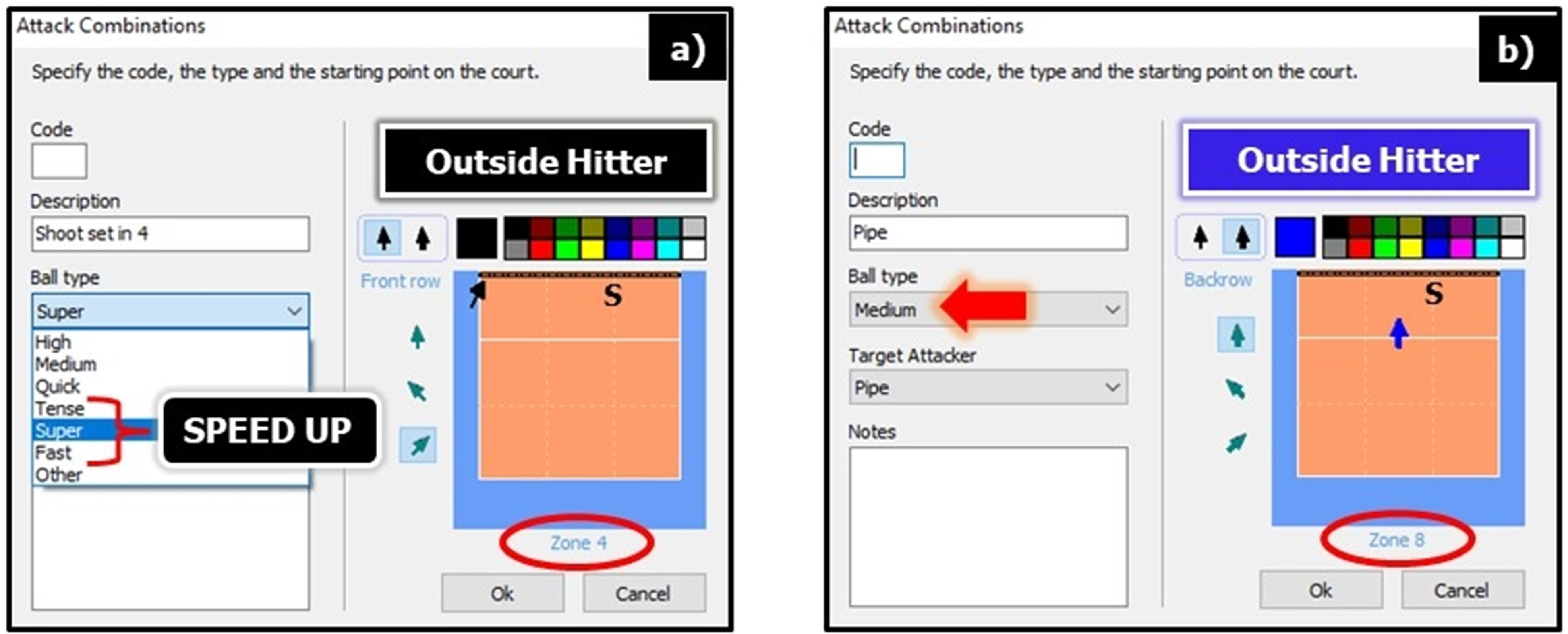
Figure (5a) illustrates the front fastball type, the black arrow indicates the speed up attack in zone 4; (5b) illustrates pipe ball type, the blue arrow indicates the speed up attack through P6, or in zone 8 if we use the Data Volley terminology. (i.e., pipe or bick). Both are performed by outside hitter players or a middle player who stays there as their home base. The letter (S) depicts the setter.
The quick attack as a concept was performed in front of the setter as well as in the back row attack through P6. Many teams in the world have used these concepts and they have shown to be very effective. Figure 6 shows that the opposite player can hit a quick back.
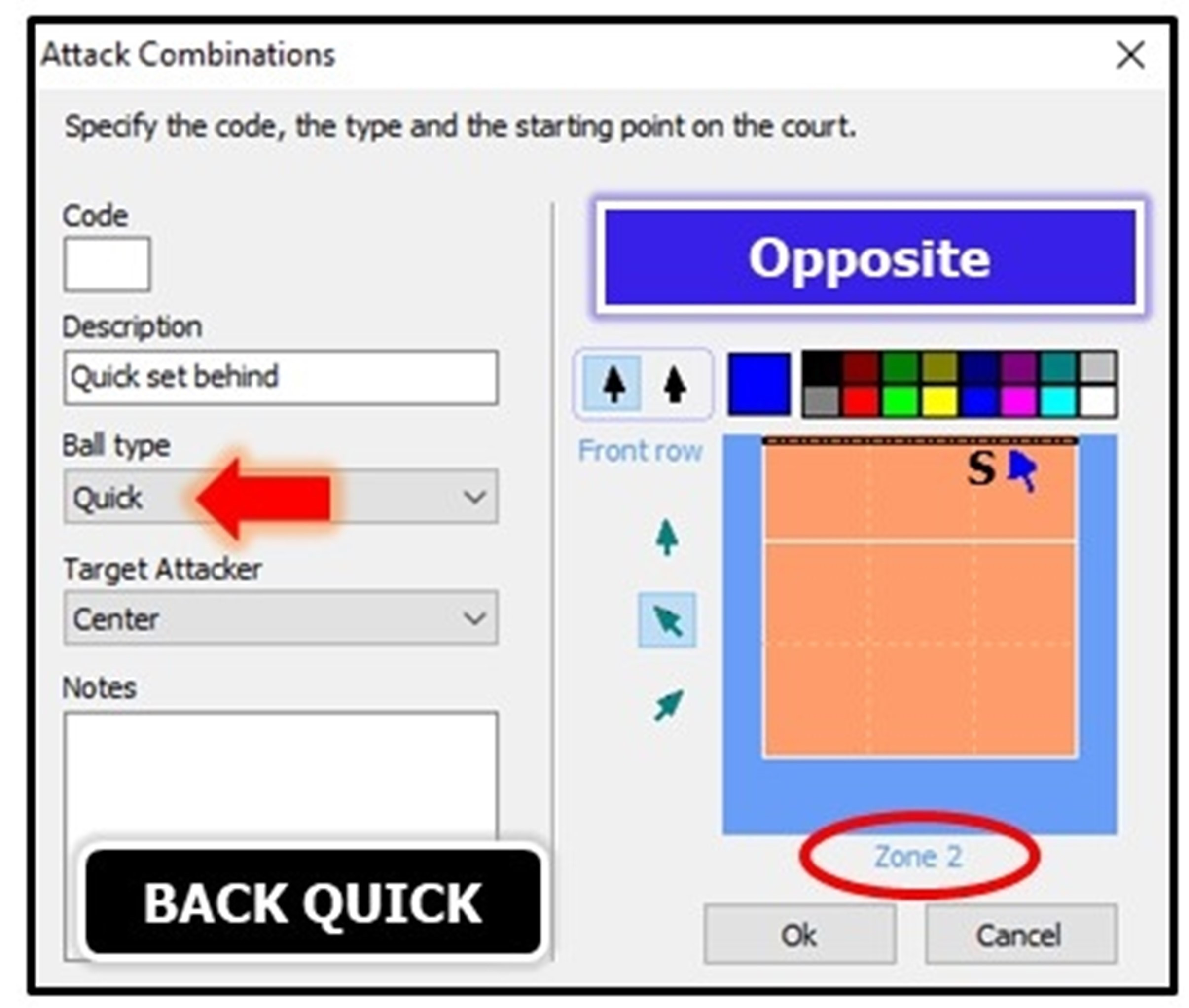
Figure 6. Illustrates that another player can also perform a quick attack, for instance, the opposite. The blue arrow indicates the back quick attack spot, and the letter (S) depicts the setter.
Of course, the attacking system evolved from rigid forms to "flexible" conventions adapted from what the players used the most. A good example of this adaptation is the fact that after the Japanese created "a system" to categorize their sets all teams and many different coaches started to create their conventions according to their preferences, volleyball I.Q., creativity, and imagination.
The quick attack continued to be perfected and Asian teams, as well as European teams, started to use quick attacks behind the setter at zone 7, 8, and 9 on the net. In some cases, many players started to spike those quick sets behind the setter off of one foot, and as a result, they would drift or slide behind the setter, and sometimes they would end up close to the post.
Therefore, they created the slide which is a quick attack performed at zones 7 and 9 on the net. Some players enjoyed spiking the slide at zone 8, but often if one tall blocker would be positioned at that zone, they normally would be blocked, so setters started to use a short slide in zone 7 or a long slide in zone 9. Although with different names these sets are performed until today. The conventions and the attack systems are not perfect.
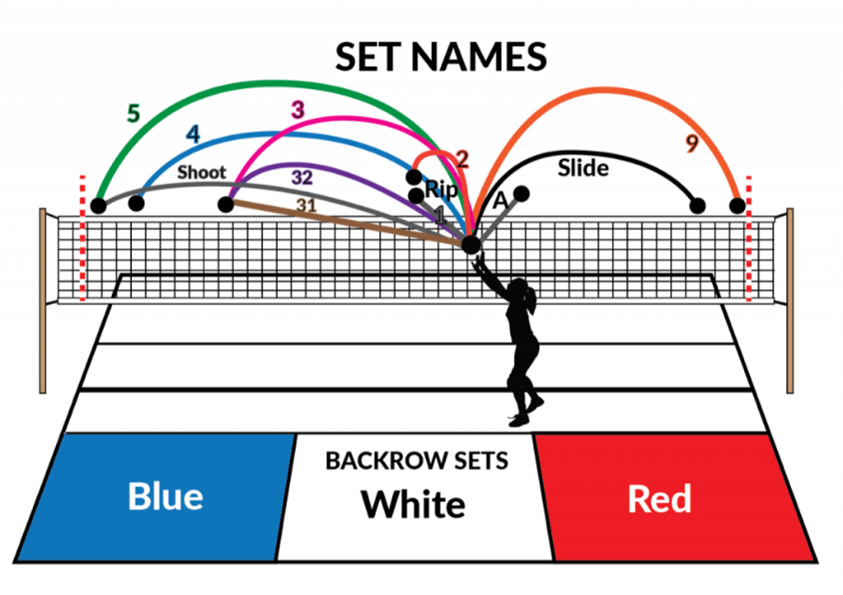
Figure 7 – Set names general. The shoot, 31, 1 (rip), the quick back (A), and the slide are considered the quick sets.
Conclusion
In sum, the quick sets are the quick one in front (rip), the 31 set, the shoot to the outside hitter, as well as the quick back (A), and the slide behind the setter.
The quick attack is so much fun to perform but to utilize it tactically and successfully, requires that the setter has the skills to set it quickly with a high rate of efficiency and accuracy. The best teams in the world have adapted to run quick attacks from perfect passes and also from passes 2 m or even 3 m off the net. But this performance requires lots of practice and a good synchronization between middle players and the setters.
Note: The authors would like to clarify that the setting area on the top length of the net represents proxy distances from the setter's setting point. And the six positions on the court, have been added with new zones 7, 8, and 9 only because the Data Volley software generates statistical reports utilizing these terms.
Authors
Leandro Dutra, Ph.D. Candidate Federal University of Minas Gerais-Brazil. dutraln@gmail.com
Author of chapters:
Tactical Evaluation in Volleyball - A Multicultural Expertise Analysis. In: 21st Century Volleyball Expertise. SportsEdTV publisher.
Gylton Da Matta, Ph.D. Colorado State University and Volleyball Executive Director SportsEdTV. gdamatta@sportsedtv.com
Da Matta, G.B. (Editor) 21st Century Volleyball Expertise. SportsEdTV Publisher: Miami, FL, USA.

